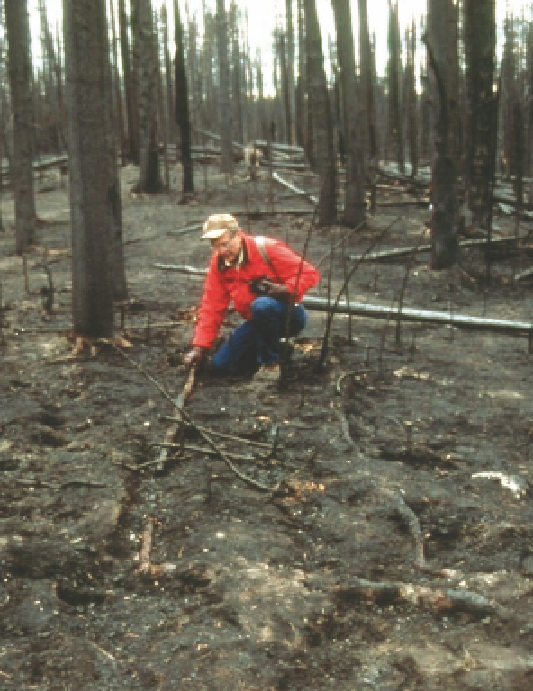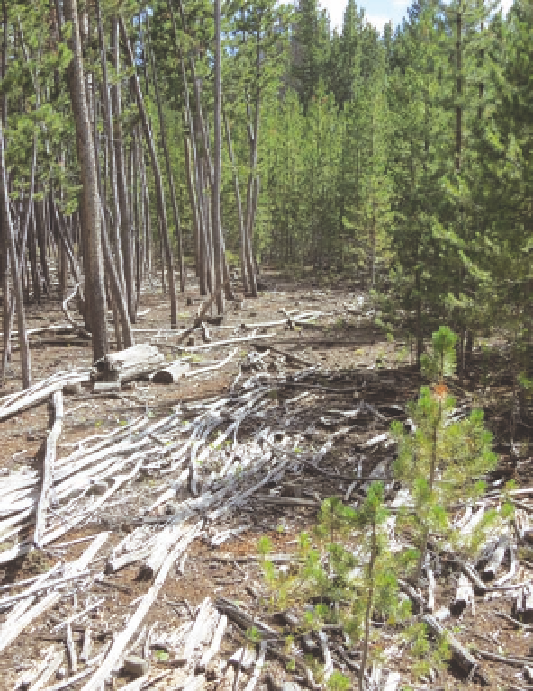Geoscience Reference
In-Depth Information
Fig. 12.4. importance of nutrients and water for the growth
of lodgepole pine. in the photo on the left, an intense fire
has burned the forest floor and some of the downed wood
buried in the litter. the photo shows a pine root that had
grown horizontally in the top layers of the soil. When the
root encountered a decomposing log, now consumed by the
fire, it turned 90 degrees as it grew into the log—most likely
because the log provided a better source of nutrients or water.
in this case, the log was burned but not the root. in the photo
on the right, a dense stand of new pines is developing after
a clearcut that occurred about 12 years previously. However,
adjacent to the uncut forest is a band with very little vegeta-
tion around the entire perimeter of the clearcut, even with
full sunlight. this pattern is common and suggests that the
roots of the mature forest trees grow outward from the trunk,
to a distance of about 12 feet, and that the roots provide too
much competition for the establishment of tree seedlings and
other plants. competition for water and nutrients may be
more important than competition for light in the understory
of lodgepole pine forests. the trees in the uncut forest on the
left are small because of their high density but are about 100
years old (see fig. 11.16).
more water than can evaporate during the year. in other
words, the ratio between precipitation and evaporation,
known as the P-e ratio, is greater than one. conse-
quently, the mountains are the region's primary source
of river water and groundwater, on which agriculture,
industry, and municipalities depend as well as ripar-
ian and wetland ecosystems. the mountains have been
referred to as “the water towers of the West.”
Because snow historically has accounted for 50-75
percent of the annual precipitation in the mountains,
streamflow has a pronounced flood peak during snow-
melt in the spring (fig. 12.5). Summer rains normally
contribute little to streamflow, because most rains are
barely sufficient to wet the forest floor, to say nothing
of wetting the soil. in contrast, snowmelt normally
saturates the soil, and then soil moisture declines
more or less steadily during the summer and early fall,
whether the vegetation is a forest, woodland, meadow,
draining from a watershed depends on at least seven
factors: water content of the snowpack, potential for
snow drifting, type of vegetation and the amount of
water transpired, water-holding capacity of the soil,
weather conditions, proportion of water that perco-
lates into groundwater, and patchiness of the land-
scape mosaic.


Search WWH ::

Custom Search